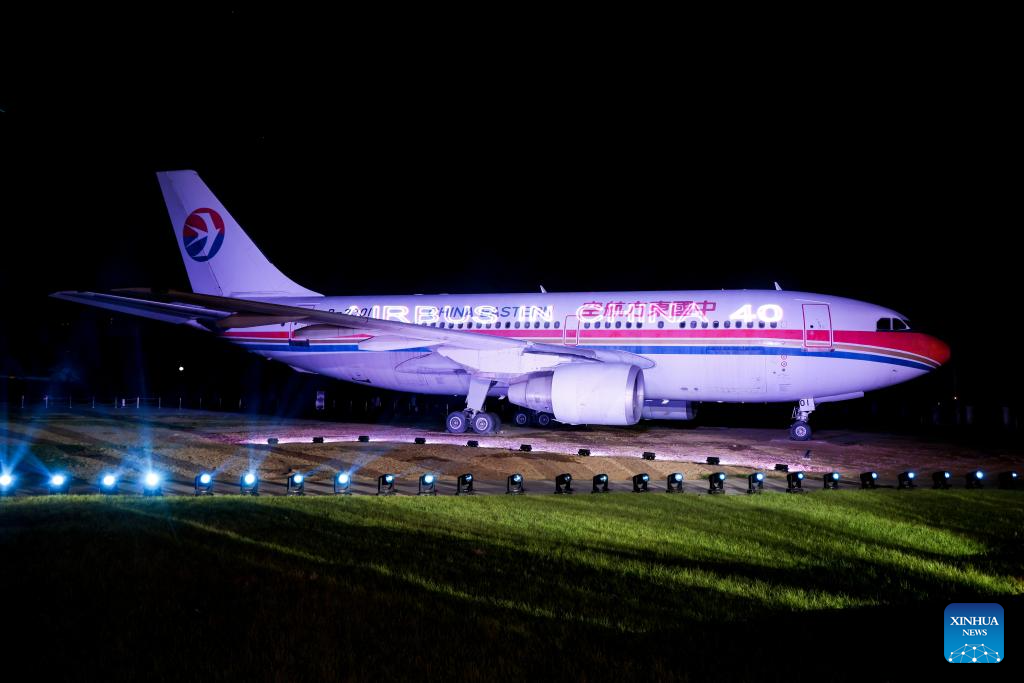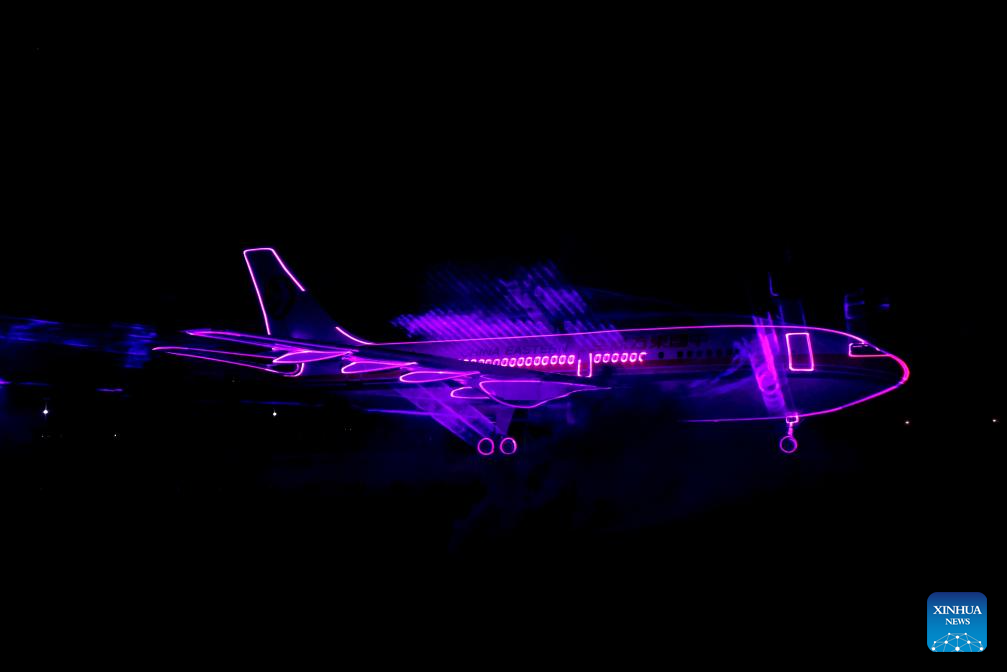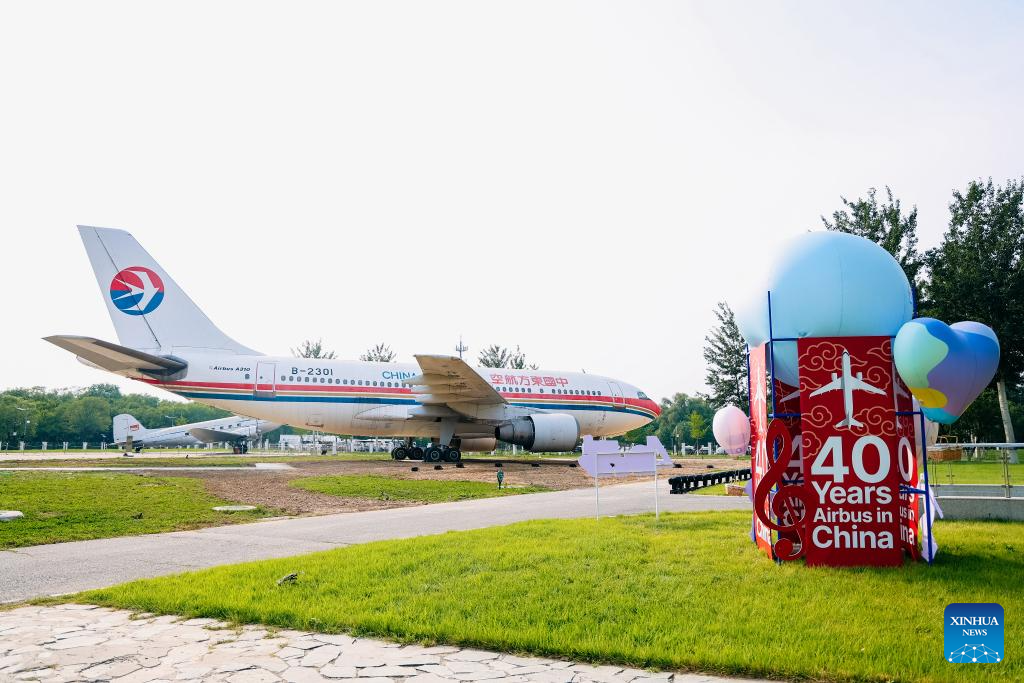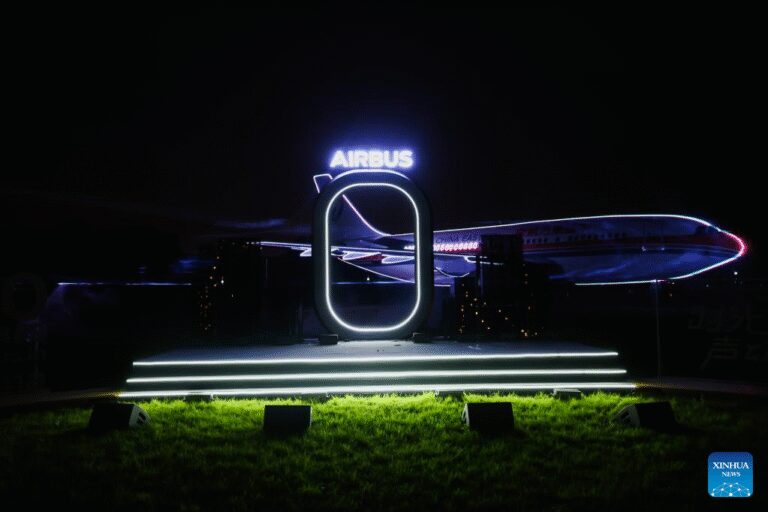
This photo taken on June 25, 2025 shows the first commercially delivered Airbus A310 exhibited at Civil Aviation Museum in Beijing, capital of China. (Xinhua)
TIANJIN, July 23 (Xinhua) — Preserved at Beijing’s Civil Aviation Museum, an Airbus A310 with the registration number B-2301 stands as a physical testament to four decades of cooperation between China’s civil aviation industry and the European plane maker.
The China Eastern Airlines lettering on the fuselage and the airline’s red-and-blue logo on the tail remain distinct despite the aircraft’s age.
The plane was Airbus’ first commercial delivery to China, delivered on June 25, 1985. Received by the Civil Aviation Administration of China (CAAC) Shanghai Branch, which was the predecessor to China Eastern Airlines, it marked the beginning of Airbus’ partnership with China’s civil aviation sector.
The delivery came as China’s reform and opening-up accelerated demand for domestic and international air travel. With a national fleet of just over 200 aircraft at the time, China sought modern jets to expand its network. The twin-engine widebody A310 significantly boosted capacities, profitability and passenger comfort on key routes between Shanghai and locations like Beijing, Guangzhou, Hong Kong, Tokyo and Osaka.
“This A310 did start what became a phenomenal success story, friendship and basis of trust between airlines and us at Airbus, beyond the European aviation ecosystem and its Chinese counterparts, and even beyond that between Europe and China,” said Christian Scherer, CEO of Airbus Commercial Aircraft.
In the decades that followed, China’s civil aviation sustained an average annual growth rate of around 20 percent in total traffic turnover over a prolonged period. Successive Airbus models, including the A300, A340, A320, A330, A380 and A350, joined Chinese fleets, enabling the creation of a comprehensive domestic and international route network.
Specific models saw notable milestone achievements. The A340 pioneered a polar route, the A319 and A330 operated effectively on the high-altitude Qinghai-Tibet Plateau, the A320 family introduced a fly-by-wire digital flight control system, the A350 opened the possibility of ultra-long-haul routes, and Airbus freighters bolstered air logistics.
Airbus became both a witness to and a participant in China’s rapid aviation development.
China is now the world’s second-largest air transport market and Airbus’ largest single-country market for commercial aircraft. Operating a fleet exceeding 4,300 aircraft, over 2,200 of which are Airbus jets, Chinese aviation has evolved from follower to leader.
The Airbus 2025 global market forecast projects annual air trips per capita in China will rise from 0.6 in 2024 to 1.8 by 2044. Over the next 20 years, China is expected to become the world’s largest air transport market, requiring 9,570 new aircraft — nearly a quarter of global demand.
“It is the intention of Airbus to continue its footprint in China,” Scherer said. “Ranging from the second final assembly line at Tianjin to the development of more services and support capabilities, including digital services and, of course, pioneering with Chinese partners in sustainable aviation fuel.”
Cooperation now spans the entire aircraft life cycle from research, design, manufacturing and final assembly to operational support and end-of-life recycling.
Airbus and its Chinese partners have established facilities across China: training, engineering and customer support centers in Beijing, an A320-family final assembly line and widebody completion-and-delivery center in Tianjin, an aircraft life-cycle services center in Chengdu, a composites manufacturing center in Harbin, an innovation center in Shenzhen, and an R&D center in Suzhou. Airbus employs over 2,300 staff in China.
To mark 40 years of operations, Airbus has launched a project to refurbish the historic B-2301 A310. After 21 years of service, the plane was retired in 2006. Repurchased by Airbus and donated to the China Civil Aviation Science Popularization Foundation, it now resides at the Civil Aviation Museum in Beijing as the institution’s largest and most valuable exhibit.
The refurbishment project, involving the aircraft’s cockpit, cabin and external livery, aims to offer the public an immersive, educational experience by 2027. Wang Yanan, an aviation expert at Beihang University, said that the revitalized A310 will become a communicator of science and culture, revealing what lies behind aircraft design and manufacturing.
Fang Zhaoya, chairman of China Eastern Airlines Technology Co., Ltd. and the project’s honorary advisor, voiced his anticipation for strengthened cooperation between Airbus and China, saying that he looks forward to “another 40 golden years of partnership.”
George Xu, executive vice president of Airbus and CEO of Airbus China, called the A310 “a symbol of China-Europe aviation cooperation and the starting point of the Airbus story in China.”
“Looking ahead, Airbus remains committed to deepening its roots in China, serving China, growing alongside its civil aviation industry, and contributing further to its high-quality development,” Xu said. ■

This photo taken on June 25, 2025 shows the first commercially delivered Airbus A310 exhibited at Civil Aviation Museum in Beijing, capital of China. (Xinhua)

This photo taken on June 25, 2025 shows the first commercially delivered Airbus A310 exhibited at Civil Aviation Museum in Beijing, capital of China. (Xinhua)

This photo taken on June 25, 2025 shows the first commercially delivered Airbus A310 exhibited at Civil Aviation Museum in Beijing, capital of China. (Xinhua)

This photo taken on June 25, 2025 shows the first commercially delivered Airbus A310 exhibited at Civil Aviation Museum in Beijing, capital of China. (Xinhua)

This photo taken on June 25, 2025 shows the first commercially delivered Airbus A310 exhibited at Civil Aviation Museum in Beijing, capital of China. (Xinhua)

